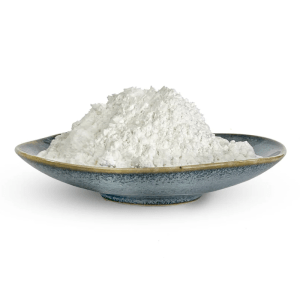
# Starch Sugar: Properties and Applications in Food Industry
## Introduction to Starch Sugar
Starch sugar, also known as glucose syrup or corn syrup, is a sweetener derived from starch through enzymatic or acid hydrolysis. This versatile ingredient has become increasingly important in the food industry due to its unique functional properties and wide range of applications.
## Chemical Composition and Properties
Starch sugar primarily consists of glucose, maltose, and higher saccharides. The exact composition depends on the degree of hydrolysis:
– Dextrose Equivalent (DE): Measures the degree of starch conversion
Keyword: Starch Sugar
– Sweetness level: Varies with DE value (higher DE = sweeter)
– Viscosity: Lower DE syrups are more viscous
– Hygroscopicity: Ability to retain moisture
– Fermentability: Important for brewing applications
## Types of Starch Sugar
The food industry utilizes several types of starch sugar:
### 1. Glucose Syrups
Produced by partial hydrolysis of starch, with DE values ranging from 20 to 95. Used extensively in confectionery, baked goods, and beverages.
### 2. High Maltose Syrups
Contain 45-70% maltose, offering reduced sweetness and excellent humectant properties.
### 3. High Fructose Corn Syrup (HFCS)
Produced by enzymatic conversion of glucose to fructose, available in different fructose concentrations (42%, 55%, or 90%).
## Functional Properties in Food Applications
Starch sugars provide multiple functional benefits:
– Sweetness modulation
– Moisture retention
– Freezing point depression
– Fermentation substrate
– Browning reaction participation
– Texture modification
– Crystallization control
## Major Applications in Food Industry
### Confectionery Products
Starch sugars are essential in candy manufacturing:
– Prevent crystallization in hard candies
– Provide body and chewiness in gummies
– Control sweetness in chocolates
– Enhance shelf life of caramels
### Baked Goods
Key functions in bakery products include:
– Yeast fermentation substrate
– Crust color development
– Moisture retention
– Texture improvement
– Freeze-thaw stability
### Beverages
Widely used in:
– Soft drinks (as sweetener and bodying agent)
– Sports drinks (rapid energy source)
– Alcoholic beverages (fermentation substrate)
### Dairy Products
Applications include:
– Ice cream (freezing point depression)
– Yogurts (flavor balance)
– Sweetened condensed milk (texture control)
## Advantages Over Other Sweeteners
Starch sugars offer several benefits compared to sucrose:
– Cost-effectiveness
– Better solubility
– Improved processing characteristics
– Enhanced functional properties
– Customizable sweetness profiles
## Future Trends and Developments
The starch sugar industry continues to evolve with:
– Development of specialized syrups for specific applications
– Increased demand for clean-label ingredients
– Advancements in enzymatic conversion technologies
– Growing interest in low-GI sweeteners
– Sustainable production methods
As consumer preferences and food technology advance, starch sugars will likely maintain their important position in the food industry, offering manufacturers versatile solutions for product formulation and quality enhancement.
0 thoughts on “Starch Sugar: Properties and Applications in Food Industry”